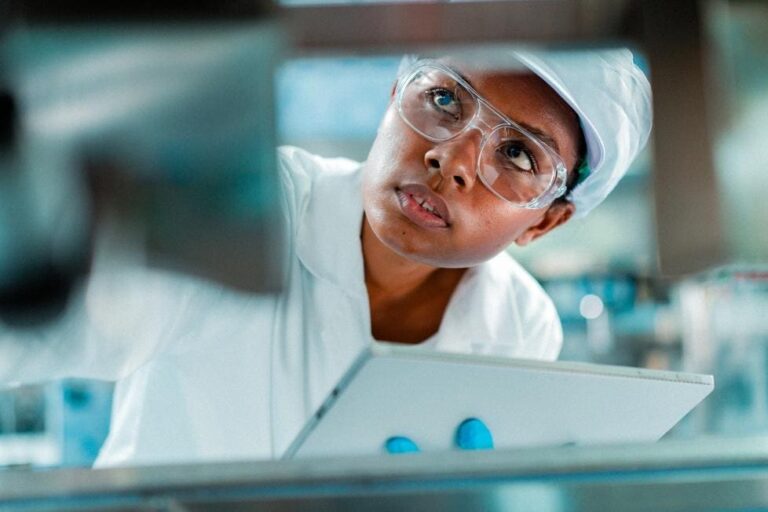getty
When you think of Albert Einstein, the first thing that probably comes to mind is the theory of relativity, which he played a key role in developing. Therefore, you may be surprised to learn that this is not the reason why he won the Nobel Prize. That honor was given to his discovery of the photoelectric effect. You may not have heard of it, but we see its influence every day, forming the basis of technologies ranging from solar panels to medical imaging to digital cameras.
Many of the technologies we rely on today originate from small advances in science and engineering that occurred years or decades ago. Around the world, scientists and engineers are constantly pushing the boundaries and making new discoveries that may one day power the future. Here, we will introduce five of those innovations in 2024.
One step closer to a DNA computer
Since the 1990s, researchers have been investigating the possibility of using DNA for computing. This could theoretically provide benefits in power requirements, parallelism, and data storage. (For example, one gram of DNA can store about 10 million hours worth of video, which currently requires an entire rack of servers.) Practical DNA computers are still a long way off, but this year some There are some interesting developments that could make that possible. A few more steps closer.
In August, a team of researchers from Johns Hopkins University and North Carolina State University published a paper demonstrating a first-of-its-kind DNA computer that can essentially not only perform calculations, but also access, add to, and modify data. The researchers were able to use the prototype to solve simple problems in games such as chess and Sudoku.
Another interesting development in DNA computing occurred this year as well. In October, researchers at Peking University published a paper demonstrating the use of DNA to store information in binary code, making it more compatible with traditional programming languages. What are the more practical applications of this technology?The absence of the need for trained researchers or specialized equipment typically required for this type of computing makes DNA an easy-to-handle storage medium.
Scientists have created a real-life version of Spider-Man’s web fluid
Here, a web fluid developed by Tufts researchers was seen suspending the beaker in the air.
Marco Lo Presti/Tufts
In the comics, the fluid in Spider-Man’s threads is an incredibly versatile substance that can be stored as a liquid, adhere to objects, and carry heavy weights. In October, researchers at Tufts University developed a real-life version of the material by extracting fiber from silkworm cocoons, adding chemical additives and creating a liquid that solidifies when squeezed through a needle and exposed to air. . This sticky substance sticks to objects and can carry more than 80 times its own weight.
The researchers’ next step is to improve the material’s strength (real spider silk, for example, is about 1,000 times stronger). But just as silk is used in many industrial and commercial products today, once its properties are refined, it has the potential to be used in a variety of applications.
Manufacture medicine in space and bring it back to Earth
Varda’s automated laboratory lands on Earth.
John Krause/Varda
In March, California-based startup Varda Space Industries published a paper showing it had successfully produced the HIV drug ritonavir in a small automated laboratory in space. The company also successfully brought the drug home, marking a milestone in demonstrating that drugs created in microgravity remain stable upon return to Earth.
Manufacturing drugs in orbit allows for greater control over the crystallization process that is common to the production of many drugs. This level of control could make the difference between administering a drug in a pill form or using an IV, which is why big pharmaceutical companies are conducting a variety of similar experiments on the International Space Station.
Get the latest technology news delivered to your inbox every Friday with The Prototype newsletter. Subscribe here.
Varda’s spacecraft has an advantage over the ISS because it is automated and does not require astronauts on board. That means it won’t be tied to NASA’s human flight schedule, significantly reducing associated costs, company President Derian Asparoukhov told Forbes earlier this year. In April, the company raised $90 million in a Series B round to accelerate spacecraft production.
Mapping this cellular process could lead to new disease treatments
It took 10 years, but in October scientists at the Center for Genome Regulation in Barcelona published a map of the human spliceosome. This is the part of the cell that reads and edits DNA to create various proteins. More than 90% of genes are edited through this mechanism, but it turns out to be much more complex than previously thought.
These blueprints for one of the most important processes in cells are a monumental step towards new drugs. Errors in spliceosomes are associated with a variety of diseases, including neurodegenerative diseases such as Parkinson’s disease, genetic disorders, and most types of cancer. Now that scientists have access to precise maps of how each of its components works, it may be possible to find new targets for drug development.
Your EV’s next battery may be made partially from coal
Coal particles that are superheated as part of the graphite manufacturing process.
Oak Ridge National Laboratory
One of the most important components of lithium-ion batteries is graphite, and this material is expected to face shortages in the 2030s due to demand from electric vehicles. Currently, the world relies on China for nearly 80% of its raw materials. The country has both mines and manufacturing facilities that can produce graphite artificially, which is currently an expensive process.
In December, researchers at Oak Ridge National Laboratory may have found a solution to stemming these potential shortages. They have developed two new processes that can turn coal into graphite. One process takes solid coal and uses electrochemical reactions to transform the coal. The other filters liquefied coal, called slurry, and processes it electrochemically to produce graphite. In both cases, the process uses less energy than traditional methods, making it a potentially lower-cost alternative.
Project leader Edgar Lara-Curzio told Forbes that this innovation highlights the potential for the world’s abundant coal to persist into the 21st century. “We could make things like carbon fiber and electrodes for energy storage devices and construction materials,” he said. This breakthrough portends a promising future for regions where coal still dominates the economy as the world transitions to renewable energy.
Learn more at Forbes


